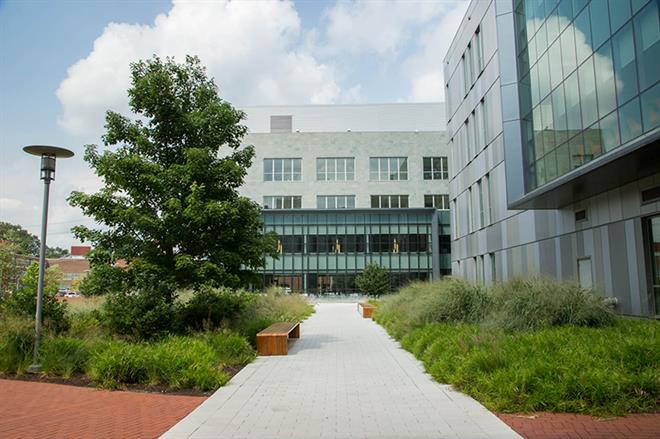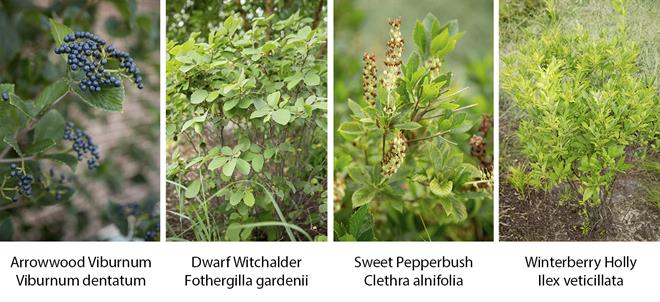
The landscape surrounding the Harker Interdisciplinary Science and Engineering (ISE) building focuses on using as many native plants as possible for the benefit of the local ecosystem. Ornamental non-invasive, non-native species have also been included.
Landscape features
- Our plants can tolerate heavy salt runoff in the winter months and do not require any irrigation
- The soil in our bioretention areas can drain very quickly but can also become inundated with stormwater, so the plants in those areas can tolerate both very dry and very wet conditions
- The seedem species planted on our green roof are capable of living in only 4 inches of soil and absorb the first 1 inch of rainwater before the rest of it enters into the bioretention areas
- We have a seasonal planting palette, meaning that the landscape looks beautiful and colorful all year round
Grasses
The grasses chosen are bright green in the summer; and even when they are dormant and brown in the winter, they still have structure to them and the Winterberry holly produce colorful berries. The plants even have a teaching component to them because they add to the University’s arboretum collection. Three plant categories in the landscape are: trees, shrubs, and groundcovers. Check out the plant highlights below from the summer months to learn about some of the specific species in our landscape.
Trees

Paperbark Maple and Bald Cypress are both native and are great in the bioretention areas. The maple has beautiful bark, which keeps it looking nice in the winter even when it is lacking leaves. The Japanese Snowbell and Gingko are non-invasive, non-native and have more of an ornamental focus.
Groundcover

North Wind Switch Grass (native) and Palm Sedge (non-invasive, non-native) are two of the main plants in the bioretention areas. Horsetail is suitable for both very wet and very dry conditions, and has a great texture and design. Seedem is planted on the green roof, which holds stormwater.
Shrubs

Sweet Pepperbush, Dwarf Witchalder, and Arrowwood Viburnum are all native shrubs that flower in the summer and are good for native insect populations. Winterberry holly has berries in the winter, adding some color to the landscape.
